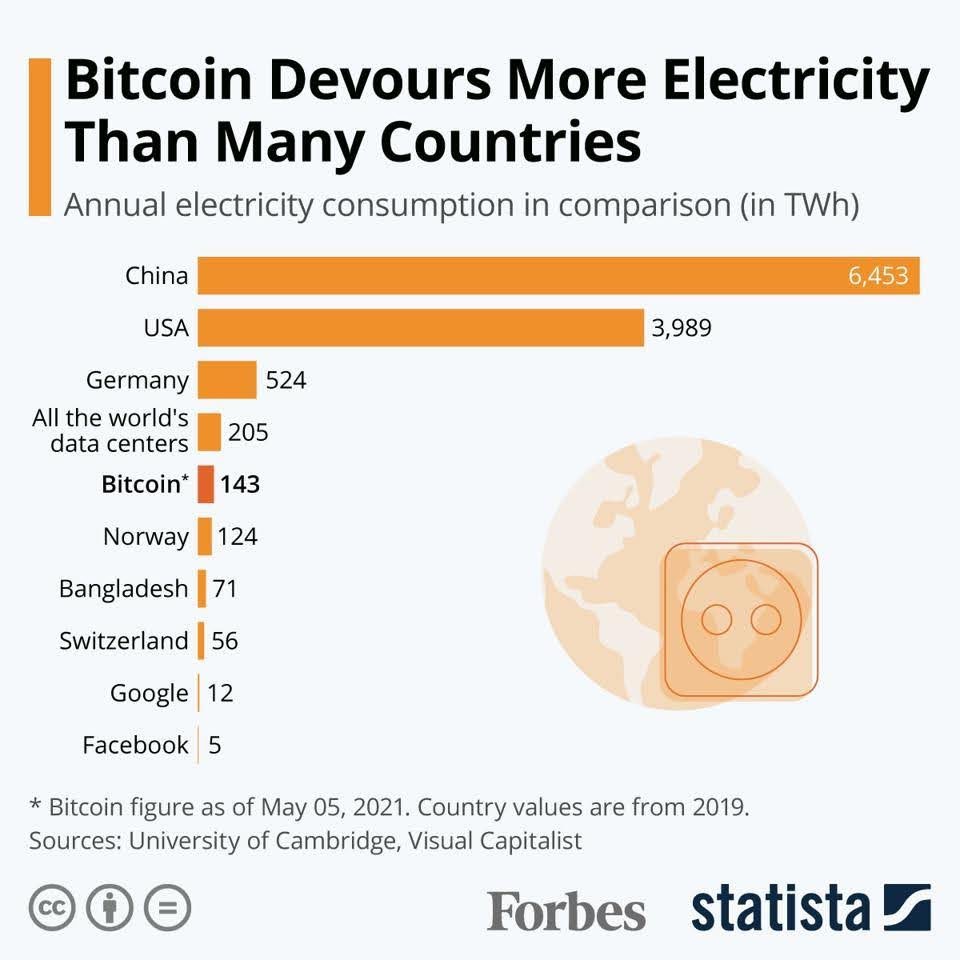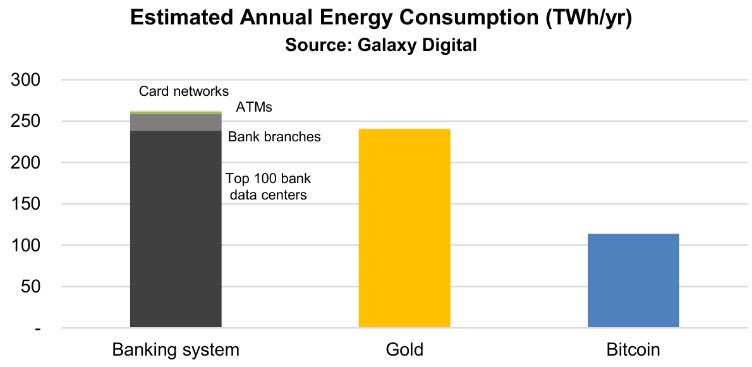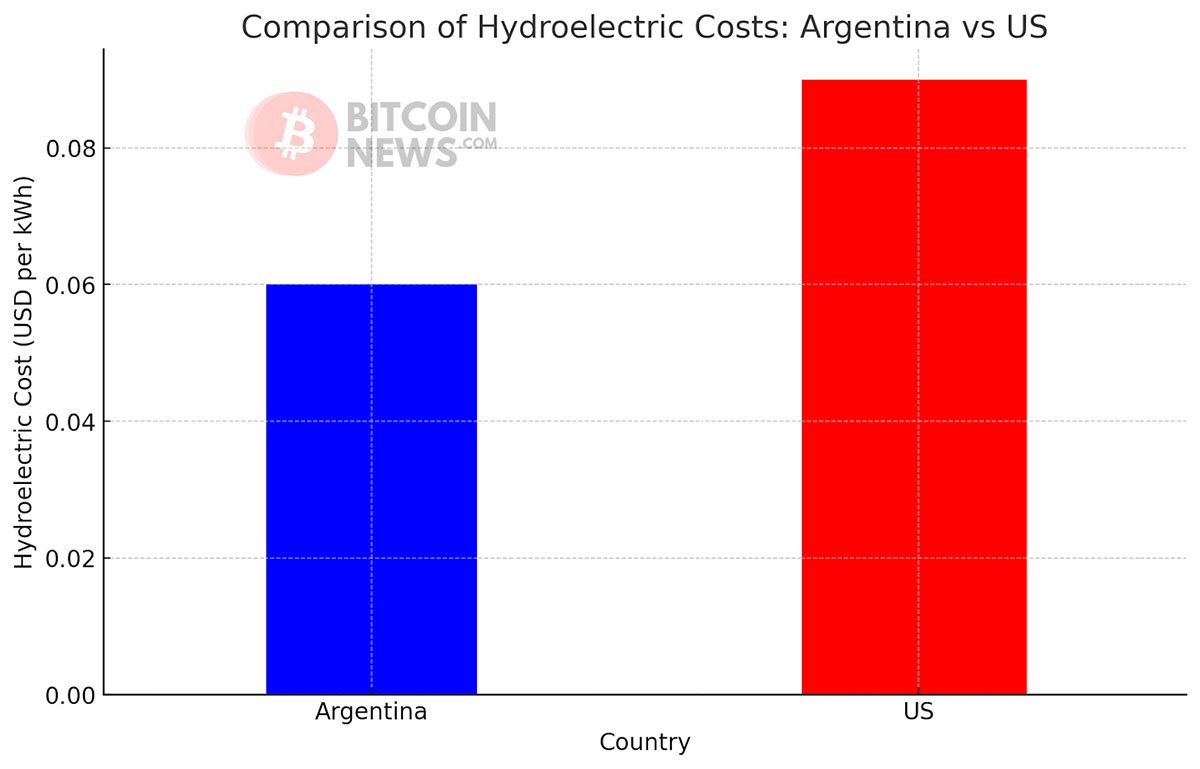Critics often argue that Bitcoin’s proof-of-work (PoW) consensus mechanism, which requires miners to solve mathematical problems, is environmentally unsustainable.
However, this narrative overlooks the transformative potential Bitcoin holds for driving renewable energy adoption and creating a more sustainable future.
The concept of “Green Bitcoin” is emerging as a powerful response to these critiques, highlighting how Bitcoin can coexist with and actively promote environmental sustainability.
The Energy Debate: Myths and Realities
Misconceptions often fuel the debate over Bitcoin’s energy usage. While it’s true that Bitcoin mining consumes significant amounts of electricity, it’s crucial to contextualize this within the broader energy landscape.
Bitcoin’s energy consumption is transparent and measurable, unlike the opaque energy costs of the traditional financial system, which includes data centers, office buildings, and physical infrastructure across the globe.

Moreover, Bitcoin’s energy consumption should not be viewed in isolation. A key factor often overlooked is the type of energy used in mining.
Not all energy is created equal; there is a vast difference between energy sourced from coal-fired plants and energy generated from renewable sources like wind, solar, or hydroelectric power.
The reality is that an increasing proportion of Bitcoin mining operations are turning to renewable energy, driven by both environmental concerns and economic incentives.

The Role of Renewable Energy in Bitcoin Mining
One of the most compelling aspects of Bitcoin’s energy use is its compatibility with renewable energy. Bitcoin mining operations are highly mobile and can be established anywhere there is an energy surplus.
Related: List of Recent Studies Highlighting Bitcoin’s Net-Positive Environmental Impact
This flexibility allows miners to set up operations in remote areas with abundant renewable energy that might otherwise go to waste.
For example, excess energy generated by hydroelectric dams in regions with low population density can be harnessed by Bitcoin miners, effectively turning wasted energy into economic value.
Furthermore, Bitcoin mining can act as a stabilizing force for renewable energy grids. Renewable energy sources like solar and wind are intermittent, meaning they don’t produce a consistent output.
Bitcoin mining operations can be dialed up or down to match the availability of renewable energy, effectively acting as a battery that absorbs excess energy during periods of high production and reducing consumption when energy is scarce.
This dynamic relationship can incentivize further investment in renewable energy infrastructure, knowing that Bitcoin mining provides a reliable demand sink for excess capacity.
Bitcoin as a Catalyst for Green Innovation
Bitcoin’s potential to drive green innovation extends beyond its direct use of renewable energy. The economic incentives embedded in the Bitcoin network encourage miners to seek out the cheapest electricity available.
Miners naturally gravitate toward greener options as renewable energy becomes more cost-competitive compared to fossil fuels. This market-driven shift toward renewable energy is accelerating as the cost of solar and wind power continues to decline.

Additionally, Bitcoin mining is becoming increasingly efficient. The development of more advanced mining hardware has dramatically increased the energy efficiency of the network.
Innovations such as immersion cooling and using excess heat from mining operations for heating buildings or greenhouses further reduce the environmental impact of mining.
As these technologies evolve, the energy footprint of Bitcoin is likely to decrease even as the network continues to grow.
Insights from Saifedean Ammous and Jordan B. Peterson shed light on how Bitcoin mining operations are reshaping the monetization of electric energy:
Related: Bitcoin is Revolutionizing Energy Access | Morgan Stanley
The Future of Green Bitcoin
Looking ahead, the trend toward Green Bitcoin is set to continue and intensify. Several Bitcoin mining companies are already committed to achieving carbon neutrality, with some operations powered entirely by renewable energy.
These companies are not only setting a precedent within the Bitcoin community but are also challenging the broader energy and financial sectors to rethink their environmental impact.
Furthermore, the rise of Green Bitcoin narrative is contributing to a shift in public perception.
As more people recognize Bitcoin’s potential to drive renewable energy adoption and innovation, the narrative is shifting from one of environmental harm to one of environmental stewardship.
Bitcoin proves it is not just a store of value or a hedge against currency devaluation, but also a tool for creating a more sustainable world.
Conclusion
Green Bitcoin is more than just a buzzword; it represents the intersection of technological innovation and environmental consciousness. Far from being at odds with the planet, Bitcoin is increasingly aligned with the goals of sustainability and renewable energy.
By harnessing the power of market incentives, Bitcoin is driving the adoption of cleaner energy sources and fostering innovations that could reshape the global energy landscape.
Bitcoin stands out as a catalyst for positive change. Its ability to turn wasted energy into economic value, stabilize renewable energy grids, and drive green innovation positions Bitcoin as a key player in the future outlook of energy.










